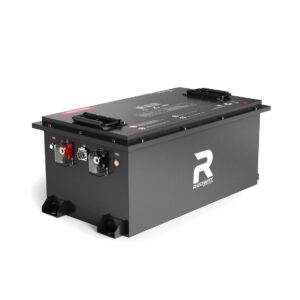What Are OEM RV Battery Solutions and Why Are They Crucial?
How Do OEM RV Batteries Differ from Standard Batteries?
OEM RV batteries are custom-designed for recreational vehicles, prioritizing durability, deep-cycle performance, and vibration resistance. Unlike standard batteries, they integrate with RV electrical systems, ensuring compatibility with inverters, solar setups, and onboard appliances. They often include thermal management and extended lifespan features tailored for mobile environments.
What Types of Batteries Are Used in OEM RV Solutions?
Lithium iron phosphate (LiFePO4) dominates modern OEM RV solutions due to 4,000+ cycle lifespans and 95% depth-of-discharge capability. Absorbent glass mat (AGM) remains popular for budget-conscious users, while emerging solid-state prototypes show promise for extreme temperature operation (-40°C to 120°C). High-energy-density nickel-manganese-cobalt (NMC) configurations are gaining traction for luxury coach applications.
LiFePO4 batteries maintain 80% capacity after 3,000 cycles even with 90% depth-of-discharge, making them ideal for full-time RVers. AGM batteries provide 500-800 cycles at half the cost, suitable for seasonal users. Solid-state prototypes demonstrate 1,500 cycles with 100% discharge capability, though commercial availability remains limited. NMC batteries offer superior energy density (200+ Wh/kg) for luxury coaches but require advanced thermal management systems to prevent thermal runaway.
| Type | Cycle Life | Energy Density | Cost Premium |
|---|---|---|---|
| LiFePO4 | 4,000+ | 160 Wh/kg | 2x |
| AGM | 800 | 50 Wh/kg | Base |
| NMC | 2,000 | 220 Wh/kg | 3x |

How Are OEM RV Battery Systems Integrated with Solar Power?
Premium OEM solutions feature MPPT charge controllers with 98% efficiency ratings and auto-sensing voltage algorithms. Advanced systems incorporate bi-directional inverters enabling vehicle-to-grid (V2G) capabilities. Integrated battery management systems (BMS) monitor cell balancing with ±10mV accuracy while managing solar input prioritization during peak irradiation periods.
What Safety Standards Govern OEM RV Battery Production?
Compliance requires UN38.3 certification for transportation, UL 1973 for stationary storage, and RVIA/NFPA 1192 standards for vehicle integration. Premium manufacturers implement IP67 waterproof enclosures and CAN bus communication protocols with MIL-STD-810G shock/vibration testing. Thermal runaway prevention systems use phase-change materials with 300W/m·K conductivity ratings.
How Do OEM Solutions Address Cold Weather Performance?
Advanced systems employ self-heating technologies using resistive elements that consume <3% capacity at -30°C. Electrolyte additives lower freezing points to -60°C while maintaining ionic conductivity above 10 mS/cm. Some designs incorporate vacuum-insulated panels (VIPs) with 0.004 W/m·K thermal conductivity for arctic expeditions.
Multi-stage cold-weather packages combine active heating with passive insulation. At -20°C, lithium batteries with self-heating circuits achieve 95% capacity retention versus 40% in unheated units. VIP insulation maintains internal temperatures above -10°C for 72 hours in -40°C environments. Electrolyte modifications using propylene carbonate solvents prevent freezing while maintaining stable charge/discharge rates.
| Solution | Temperature Range | Capacity Retention | Activation Time |
|---|---|---|---|
| Self-heating | -30°C to 50°C | 95% | <5 minutes |
| VIP Insulation | -40°C to 70°C | 98% | Passive |
Expert Views
“Modern OEM RV batteries now achieve 15-year lifespans through hybrid cathode formulations,” notes Redway’s Chief Engineer. “Our latest 48V systems deliver 40kWh capacity in <300kg packages using graphene-enhanced anodes. The real breakthrough is smart load forecasting – AI predicts energy needs with 92% accuracy, optimizing charge cycles dynamically.”
Conclusion
OEM RV battery solutions represent the convergence of automotive-grade engineering and renewable energy technology. With evolving standards and material science breakthroughs, these systems now offer unprecedented reliability for off-grid living while supporting complex energy ecosystems.
FAQ
- Can OEM batteries power RV air conditioners?
- High-capacity lithium systems (≥300Ah) can run 15,000 BTU AC units for 8-10 hours continuously.
- What’s the typical warranty period?
- Leading OEMs offer 5-8 year warranties with ≥70% capacity retention guarantees.
- Are these batteries recyclable?
- Modern LiFePO4 batteries achieve 98% recyclability through closed-loop hydrometallurgical processes.
